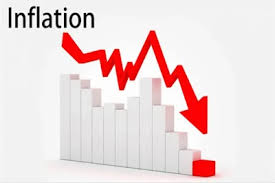Nigeria’s Inflation Falls to 22.22% in June, Lowest in Over a Year — NBS
🇳🇬 Nigeria’s Inflation Falls to 22.22% in June, Lowest in Over a Year — NBS
Nigeria’s inflation rate dropped to 22.22% in June 2025, marking the lowest headline inflation figure in over a year, according to the latest Consumer Price Index (CPI) report released by the National Bureau of Statistics (NBS).
The June figure represents a 0.75 percentage point drop from May’s 22.97%, and a significant decline from 34.19% in June 2024 — a sharp 11.97 percentage point decrease year-on-year.
“The Consumer Price Index rose to 123.4 in June, up from 121.4 in May 2025,” the NBS reported, highlighting continued monthly price increases despite the annual slowdown.
📈 Mixed Signals: Prices Rising Monthly Despite Yearly Drop
While the annual inflation appears to be easing — largely due to a rebased CPI index using 2024 as the new base year — prices rose month-on-month by 1.68%, compared to 1.53% in May, indicating ongoing inflationary pressures on a short-term basis.
Food inflation dropped sharply year-on-year to 21.97%, down from 40.87% in June 2024.
However, it rose month-on-month by 3.25%, up from 2.19%, driven by price spikes in staples like tomatoes, pepper, meat, and crayfish.
🧮 Core Inflation and Regional Insights
Core inflation (excluding volatile food and energy) stood at 22.76% year-on-year, down from 27.4% in June 2024.
On a month-to-month basis, it climbed to 2.46%, up from 1.10% in May — a sign of growing cost pressures outside the food sector.
📊 Urban vs Rural Inflation:
Urban inflation fell to 22.72% (YoY), with a monthly rise of 2.11%.
Rural inflation dropped to 20.85% (YoY), but slowed MoM to just 0.63%, compared to 1.83% in May.
🗺 State-Level Standouts
Highest Inflation (YoY):
Borno: 31.63%
Abuja: 26.79%
Benue: 25.91%
Lowest Inflation (YoY):
Zamfara: 9.90%
Yobe: 13.51%
Sokoto: 15.78%
Food Inflation Extremes (YoY):
Highest: Borno (47.40%), Ebonyi (30.62%), Bayelsa (28.64%)
Lowest: Katsina (6.21%), Adamawa (10.90%), Sokoto (15.25%)
Improvement or Illusion?
The year-on-year inflation figures may suggest macroeconomic improvements — possibly due to monetary tightening, base effects, or exchange rate stability — but monthly inflation continues to rise, underscoring the ongoing strain on household budgets.
Sectors contributing most to inflation include:
Food and non-alcoholic beverages
Transport
Housing, utilities
Health and education
Clothing and footwear
With both urban and rural households still grappling with rising prices, experts say sustained policy action will be required to translate these gains into tangible relief for Nigerians.
By Haruna Yakubu Haruna



















